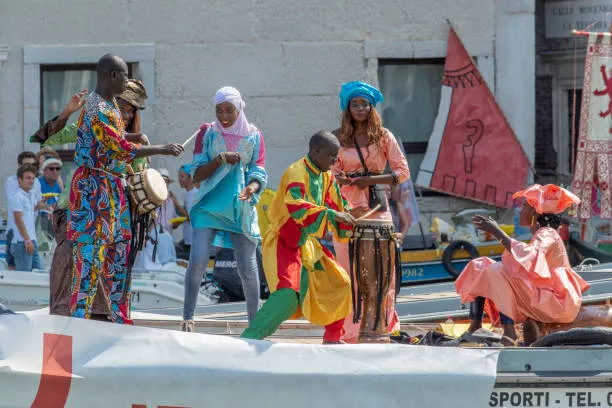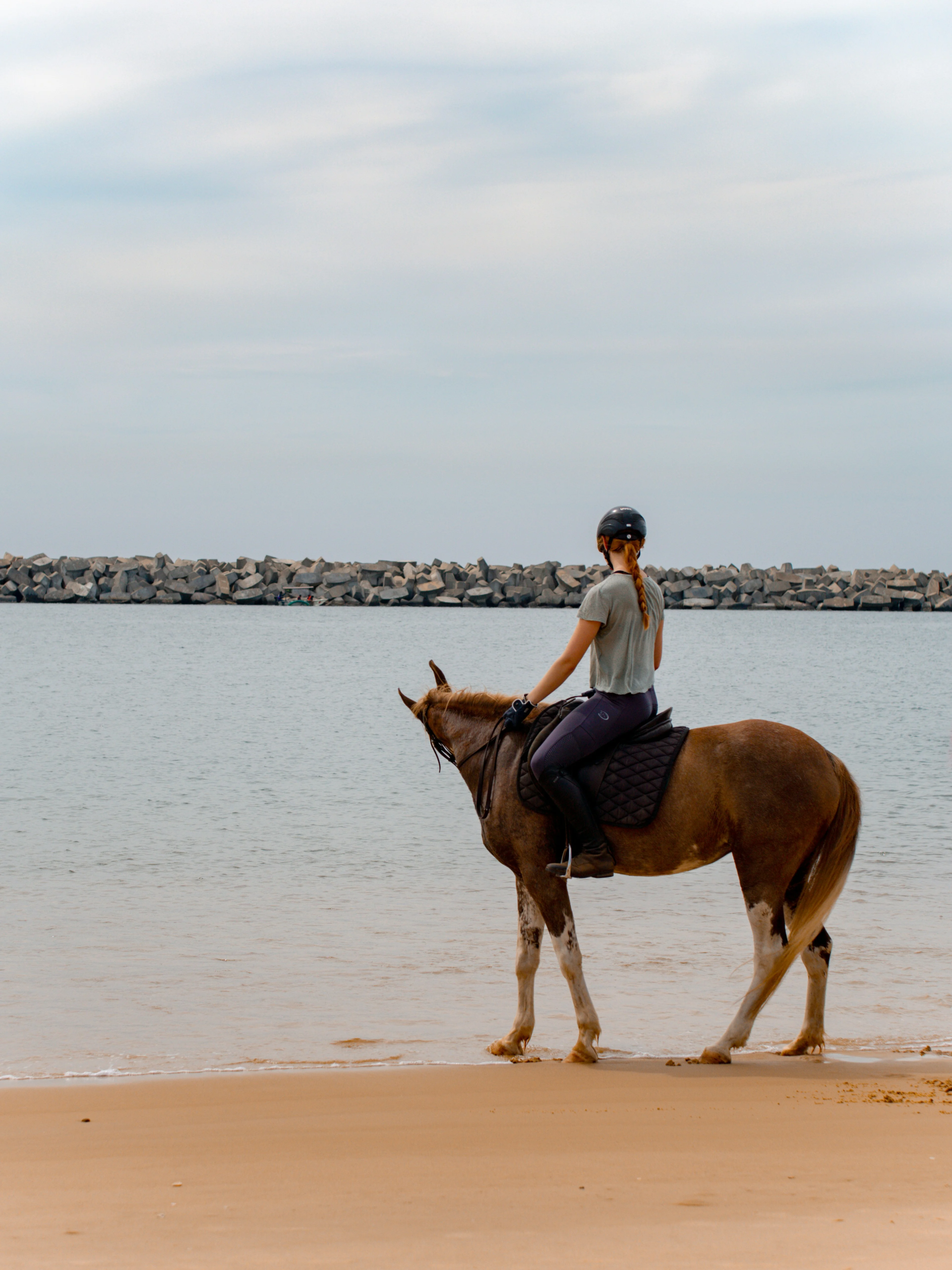Senegalese traditional dance represents much more than a simple art of movement. It is a true cultural expression that embodies the identity, history, and deep values of the different communities of Senegal. For generations, this form of dance has been at the heart of celebrations, social rites, and community events. It conveys a universal language that unites peoples around meaningful rhythms and gestures. Each movement, each rhythm, and each posture tells a story, sometimes ancient, sometimes linked to spiritual beliefs, that reflects the soul of the country. Traditional dance is thus an essential vehicle for transmitting and preserving Senegalese collective memory.
The richness of Senegalese traditional dance also lies in its diversity. Indeed, the country is multiethnic, and each group has its own dances, linked to its customs, history, and religious practices. These dances are both artistic works and social instruments, capable of educating, uniting, and even healing. They are expressed during ceremonies and celebrations, but also in daily life, through often improvised forms that invite conviviality and sharing. The body then becomes a powerful means of communication, where music and percussion create the energy needed to bring these ancestral traditions to life.
Thus, discovering Senegalese traditional dance means diving into the heart of a unique universe where culture expresses itself in all its depth and vitality. It is also an invitation to understand Senegal differently, through its sounds, rhythms, and movements. This dance is a living testimony of an intangible heritage that deserves to be valued, transmitted, and celebrated through time. It is a bridge between past and present, between generations, that fascinates locals and visitors from around the world alike.
Origins and Diversity of Senegalese Traditional Dances
The ethnic diversity of Senegal is a major factor that explains the richness of its traditional dances. The country has several major ethnic groups: Wolofs, Serers, Peuls, Diolas, Mandingues, and many others. Each of these groups has developed its own dance styles, which are often linked to specific social, ritual, or festive functions. These dances are strong identity markers that tell the history of each people and contribute to community cohesion. They are the result of an oral and bodily transmission that is perpetuated from generation to generation.
For example, Sabar, the dance of the Wolofs, is one of the most famous. This style is recognized for its rapid rhythm, dynamic movements, and close connection with percussion. Sabar often accompanies celebrations or social gatherings, but can also be used to express intense emotions, such as joy, anger, or defiance. In contrast, among the Diolas, dances are more ritualistic and often associated with initiation ceremonies or ancestral cults. The gestures have strong symbolism and tell stories linked to local myths and beliefs.
Thus, the diversity of Senegalese traditional dances perfectly illustrates the country’s cultural richness. It also testifies to the ability of Senegalese peoples to use dance as a means of expression, communication, and resistance. Each dance, whether festive, ritual, or narrative, contributes to nourishing a living cultural heritage at the heart of Senegal’s social and spiritual life.
Instruments and Rhythms at the Heart of Senegalese Traditional Dance
Senegalese traditional dances are intimately linked to their music, and more specifically to percussion. The role of instruments is central, as they dictate the tempo, inspire movements, and create the atmosphere. Among the most emblematic instruments is the Sabar, a drum played with a particular technique combining strikes with the hand and fingers. The sound of the Sabar is both powerful and nuanced, capable of generating the energy needed to propel dancers into frenzied or calmer rhythms.
Besides the Sabar, other percussion instruments such as the Tama (talking drum) and the Djembe play an essential role in traditional music. These instruments offer a varied sound palette that accompanies both popular and ritual dances. The relationship between musicians and dancers is a form of living dialogue, where each movement is in perfect harmony with the rhythm. Music gives life to dance, while dancers respond to music through their gestures and expressions.
Finally, the voice often completes this sound tableau through songs, praises, or calls. These vocal elements add a narrative dimension to the dance, sometimes telling ancestral stories or glorifying local heroes. The whole forms a complete and immersive spectacle where dance becomes a true body language carried by music and tradition.
The Meanings and Social Functions of Senegalese Traditional Dance
Senegalese traditional dance is not limited to a simple artistic performance. It fulfills many social and cultural functions, often linked to rites of passage, ceremonies, or community events. For example, during weddings, baptisms, or funerals, dance plays a key role in marking these important moments of collective and individual life. It helps structure these events and strengthen social bonds.
Beyond ceremonies, dance is also a means of non-verbal communication. It transmits messages, emotions, and teachings. Certain movements are codified and carry precise symbolism that is understood by community members. Moreover, dance reinforces the sense of belonging by bringing generations together around a common heritage. It is a factor of social cohesion and a space for collective expression.
Finally, the spiritual dimension is omnipresent in many Senegalese dances. Some dances are dedicated to ancestors, spirits, or deities. They are then considered sacred rituals, allowing communication with the invisible world. These ritual dances have a ceremonial character and are practiced in a sacred context, thus reinforcing the place of dance in the religious and cultural life of the populations.
The Most Famous Traditional Dances of Senegal
Among the most emblematic Senegalese traditional dances, Sabar occupies a central place. Very popular, it is recognized for its rapid rhythms and bouncing steps. This dance is practiced on many festive occasions and often brings together a large crowd, where men and women participate enthusiastically. Sabar is a true national symbol that combines technical virtuosity and popular expression.
Another widely known dance is Mbalax, a contemporary evolution derived from traditional Sabar rhythms. Popularized internationally by artists like Youssou N’Dour, Mbalax dance is a bridge between tradition and modernity. It retains ancestral rhythms while integrating urban musical influences, which allows it to reach a young and international audience. Mbalax is today an essential element of contemporary Senegalese culture.
Among the Mandingues, the Djolé dance is renowned for its ritual character and cadenced movements. It is often performed during important ceremonies, with specific costumes that reinforce the sacred and festive aspect of the dance. Similarly, among the Diolas, the Ebek dance is linked to ancestral cults, particularly fertility and harvests. These dances reveal the symbolic depth of Senegalese traditions, where each movement carries precise meaning.
Senegalese Traditional Dance in the Face of Modernity
In the era of globalization and multiple cultural influences, Senegalese traditional dance is experiencing a dynamic renewal. While it remains strongly linked to traditions, it also adapts to the tastes and fashions of new generations. Young dancers integrate modern techniques, blend traditional dances with contemporary styles like hip-hop or urban dance, thus creating hybrid forms that are gaining popularity.
This blend between tradition and modernity allows Senegalese dance to remain alive and attractive. However, it raises the question of preserving ancestral forms. To prevent certain dances from disappearing, several cultural initiatives, dance schools, and artistic companies have committed to training and promoting traditional dances. These efforts contribute to maintaining rigorous knowledge transmission.
Finally, local and international cultural festivals play an essential role in promoting Senegalese dance. They offer a platform to present this rich culture to a global audience, while stimulating cultural tourism in Senegal. Thanks to these events, traditional dance continues to shine and establish itself as a key element of national identity.
Conclusion:
Senegalese traditional dance is a profound cultural expression that transcends time and generations. It embodies both the history, beliefs, and values of Senegalese peoples. Through its captivating rhythms, precise gestures, and colorful costumes, it tells stories and transmits universal messages. This intangible heritage is a precious link between past and present, a factor of social cohesion, and a means of spiritual expression.
Faced with the challenges of modernity, it is essential to preserve and promote this artistic tradition. Senegalese dances continue to evolve, but safeguarding ancestral forms remains a priority to ensure transmission to future generations. By valuing traditional dance, Senegal affirms its unique cultural richness and offers the world an open window onto its soul.
Experience the Authenticity of Senegalese Culture with SENEGAL SHUTTLE
Do you dream of attending authentic Sabar performances, participating in traditional ceremonies, or discovering villages where these ancestral dances are still celebrated? SENEGAL SHUTTLE accompanies you in your cultural exploration of Senegal by offering you reliable, comfortable, and secure transportation service to all the great sites of Senegalese tradition.
Book now and immerse yourself in the heart of Senegal’s living heritage!
📞 Contact SENEGAL SHUTTLE to organize your cultural tour
🚐 Comfort • Safety • Authenticity










Leave a Comment